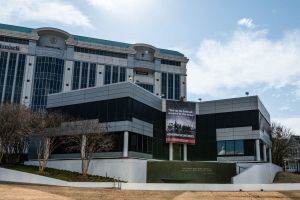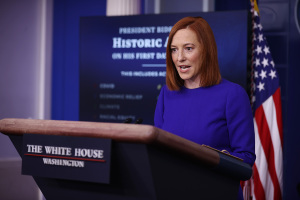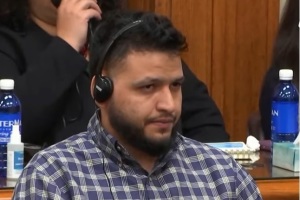Christmas Is Not Illegal…Yet!
When I was a child in the 1950s, the magic of Christmas was promoted in the schools. We sang Christmas carols in the classroom. There were cutouts of the Nativity scene on the bulletin board, along with the smiling, chubby face of Santa and Rudolph. We were all acutely aware that Christmas was more than a season to receive—it was a special time to give as well.
But times have changed. Schools across the country avoid anything that alludes to the true meaning of Christmas—such as angels, the baby Jesus, stables and shepherds.
In one West Virginia town, although the manger scene (one of 350 light exhibits in the town’s annual Festival of Lights) included shepherds, camels and a guiding star, the main attractions—Jesus, Mary and Joseph—were nowhere to be found. Supposedly concerns about the separation of church and state resulted in the omission.
In Chicago, organizers of a German Christkindlmarket were informed that the public Christmas festival was no place for the Christmas story. Officials were concerned that clips of the film “The Nativity Story,” which were to be played at the festival, might offend someone.
In Connecticut, teachers last year were told to change the wording of the classic poem “Twas the Night Before Christmas” to “Twas the Night Before a Holiday.” And as a mother of two schoolchildren recently remarked: “In the past, this school has gone from ‘winter’ parties that banned red and green cupcakes, and napkins, to banning any Winter party in fear that it may be mistaken for Christmas.”
I have yet to understand how anyone can discuss the true—or even historical—meaning of Christmas without at least a reference to Christ. Surely something has gone wrong when America’s children are encouraged to celebrate the fictional Rudolph but are refused the opportunity to even mention Jesus, who was an actual, historical person. To claim that Christmas is something other than what it is—a holiday with a religious foundation—is both dishonest and historically unsound.
Indeed, Christmas (Old English Cristes Moesse, “the Mass of Christ”) was instituted, and for centuries kept, as a religious holiday (as in “holy day”). Originally, Christmas included festivities, but its primary purpose was to provide a time for spiritual renewal.
Unfortunately, far too many parents, students and teachers erroneously believe they cannot celebrate the religious nature of Christmas in the public schools. Whether through ignorance or fear, Americans are painfully misguided about the recognition of religious holidays. Ironically, the most targeted religious holiday for exclusion is Christmas—which is also the most popular in American culture. Are our schoolchildren to be forbidden from learning about one of the most culturally significant events because it has religious overtones?
It isn’t the fear of lawsuits that prompts school officials to erase Christmas from the calendar. No courts have ruled that Christmas cannot be celebrated in the schools. Instead, it is the anathema of political correctness that forces Christmas out of the school if there is the possibility that even one person might be offended by the mention of God or Christ.
However, there are constitutional ways to celebrate Christmas in the public schools without violating the United States Constitution. These are succinctly set forth in The Rutherford Institute’s “Twelve Rules of Christmas” (available here). While it is true that public school teachers, as agents of the state, may not advance religion, they are allowed to discuss the role of religion in all aspects of American culture and its history. This includes the religious aspects of the Christmas holiday.
For instance, teachers can use Christmas art, music, literature and drama in their classrooms, as long as they illustrate the cultural heritage from which the holiday has developed. Religious symbols, such as a Nativity scene, can be used in this context as well. Of course, any holiday observance should occur in an educational setting, rather than in a devotional atmosphere. Teachers should also remember to offer students and their parents the school district’s opt-out policy as an alternative to the teaching about any particular religion.
While our Constitution does not give carte blanche to promote religion in the public schools, neither does it dictate a cleansing of Christmas from the classroom. Students may enjoy the same freedom of religious expression that is allowed any other time of the year—in or out of the classroom. This means that students can freely distribute Christmas or Hanukkah cards to their friends and teachers, just as they would a birthday card. Such cards can even mention the words God and Jesus Christ.
The trend toward erasing traditional Christmas practices from our daily life is discouraging and disheartening. In a society already known for its selfishness and consumerism, it seems that a religious holiday would be an opportunity to celebrate something more essential, something wholesome and good and also something that would remind us of our nation’s history—one that is dominated with a spiritual and religious heritage.
In fact, rather than making Christmas the height of the selling season, the focus should be on celebrating family and friendship, camaraderie and memories. It should be a time to reflect and celebrate our freedoms. It should be a season of extending a helping hand to the less fortunate. It should be a time to step back and meditate on the original meaning behind the Christmas holiday. And it should be a time of teaching these important traditions in our homes—and in our schools.
_________________________________________________
Constitutional attorney and author John W. Whitehead is founder and president of The Rutherford Institute. He can be contacted at johnw@rutherford.org. Information about the Institute is available at www.rutherford.org.




























